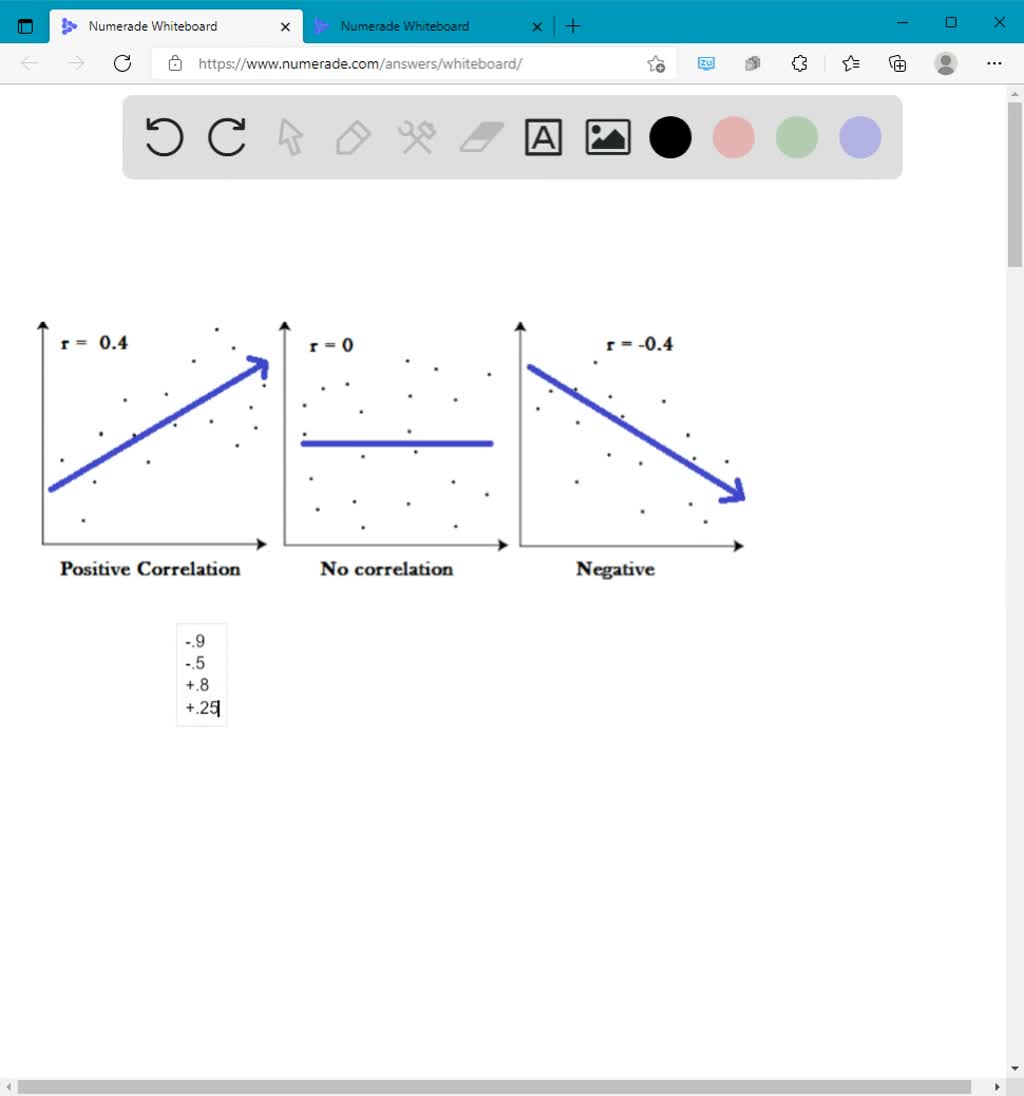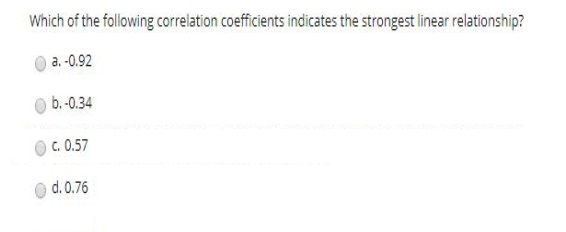Which Of The Following Correlations Is The Strongest

In the realm of statistical analysis, discerning the strength of relationships between different variables is crucial for understanding complex phenomena. Recently, a comprehensive study comparing several correlations has yielded insights into which factors exhibit the most robust associations.
The research, conducted by a team at the Institute for Advanced Statistical Modeling, aimed to identify the strongest correlation among a pre-selected set of variables. The findings have significant implications for various fields, including economics, healthcare, and environmental science, as they highlight the most predictive relationships, informing decision-making and resource allocation.
Methodology and Data Sources
The study analyzed several potential correlations, focusing on relationships that are frequently discussed in academic and policy circles. These included the correlation between education level and income, smoking and lung cancer rates, exercise and cardiovascular health, and rainfall levels and agricultural yield.
Data was sourced from reputable organizations such as the U.S. Census Bureau, the Centers for Disease Control and Prevention (CDC), the American Heart Association, and the National Oceanic and Atmospheric Administration (NOAA). This ensured the data's reliability and validity, which is essential for drawing accurate conclusions about the strength of the correlations.
The research team employed various statistical methods, including Pearson's correlation coefficient, to quantify the strength and direction of the relationships. They also used regression analysis to control for confounding variables that might obscure the true association between the factors being examined.
Key Findings: Unveiling the Strongest Correlation
The results indicated that the correlation between smoking and lung cancer rates exhibited the strongest association among those studied. This robust relationship, confirmed across multiple datasets and geographical locations, underscores the significant health risks associated with smoking.
While the other correlations analyzed, such as education level and income, also showed statistically significant relationships, the magnitude of the correlation between smoking and lung cancer was considerably higher. This means that changes in smoking rates are strongly associated with corresponding changes in lung cancer incidence.
Dr. Emily Carter, lead researcher on the project, emphasized the importance of this finding. "The strength of the correlation between smoking and lung cancer serves as a stark reminder of the devastating impact of tobacco use on public health," she stated.
Implications and Potential Impact
The identification of smoking and lung cancer as the strongest correlation has several important implications. It reinforces the need for continued public health efforts aimed at reducing smoking rates through education, prevention, and cessation programs.
The findings also highlight the potential for targeted interventions aimed at populations with high smoking rates. By focusing on these groups, public health officials can maximize the impact of their efforts and reduce the burden of lung cancer.
Furthermore, the study's methodology provides a framework for analyzing other potential correlations and identifying factors that have the most significant impact on various outcomes. This could inform policy decisions in a wide range of areas, from economic development to environmental protection.
Human-Interest Angle: A Personal Story
John Smith, a lung cancer survivor, shared his personal story and the devastating impact smoking had on his life. He was diagnosed with lung cancer at the age of 55, after having smoked for over 30 years.
"I wish I had known the risks earlier," John said. "I hope my story can serve as a warning to others and encourage them to quit smoking before it's too late." His story underscores the real-life consequences of the strong correlation between smoking and lung cancer.
John now actively participates in advocacy efforts to raise awareness about the dangers of smoking. He hopes to make a difference and prevent others from experiencing the same devastating diagnosis he faced.
Conclusion: The Power of Correlation
The study's findings on the strongest correlation underscore the importance of rigorous statistical analysis for understanding complex relationships. The correlation between smoking and lung cancer serves as a powerful example of how identifying strong associations can inform public health interventions and improve societal well-being.
Moving forward, further research is needed to explore other potential correlations and identify factors that can contribute to positive outcomes in various fields. By leveraging the power of statistical analysis, we can gain a deeper understanding of the world around us and make more informed decisions.
The Institute for Advanced Statistical Modeling plans to continue its work in this area, focusing on identifying and analyzing correlations that have the potential to improve lives and shape a better future for all. The hope is that these findings will drive effective strategies, reduce negative impacts, and foster a healthier, more informed society.





.jpg)







.jpg)
+.15+B)+.70..jpg)

